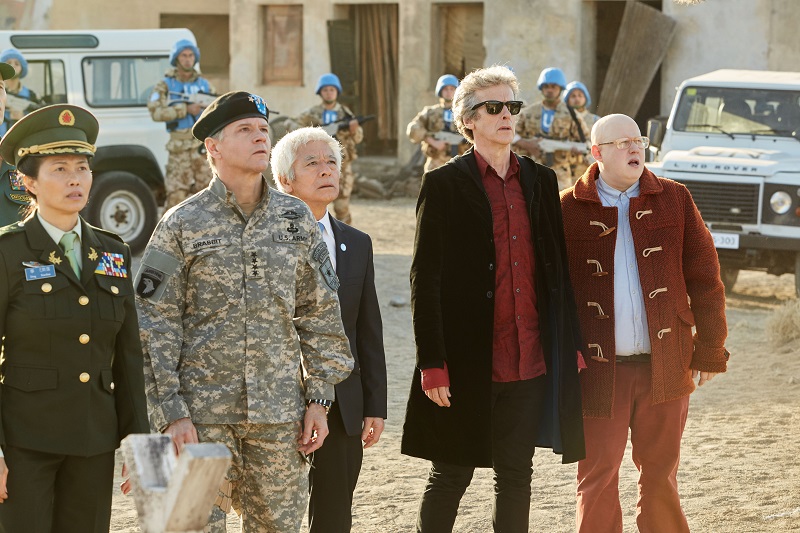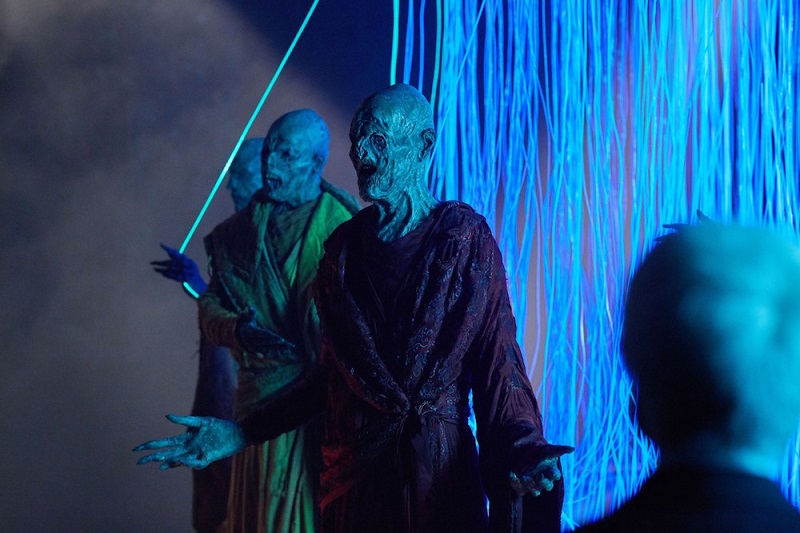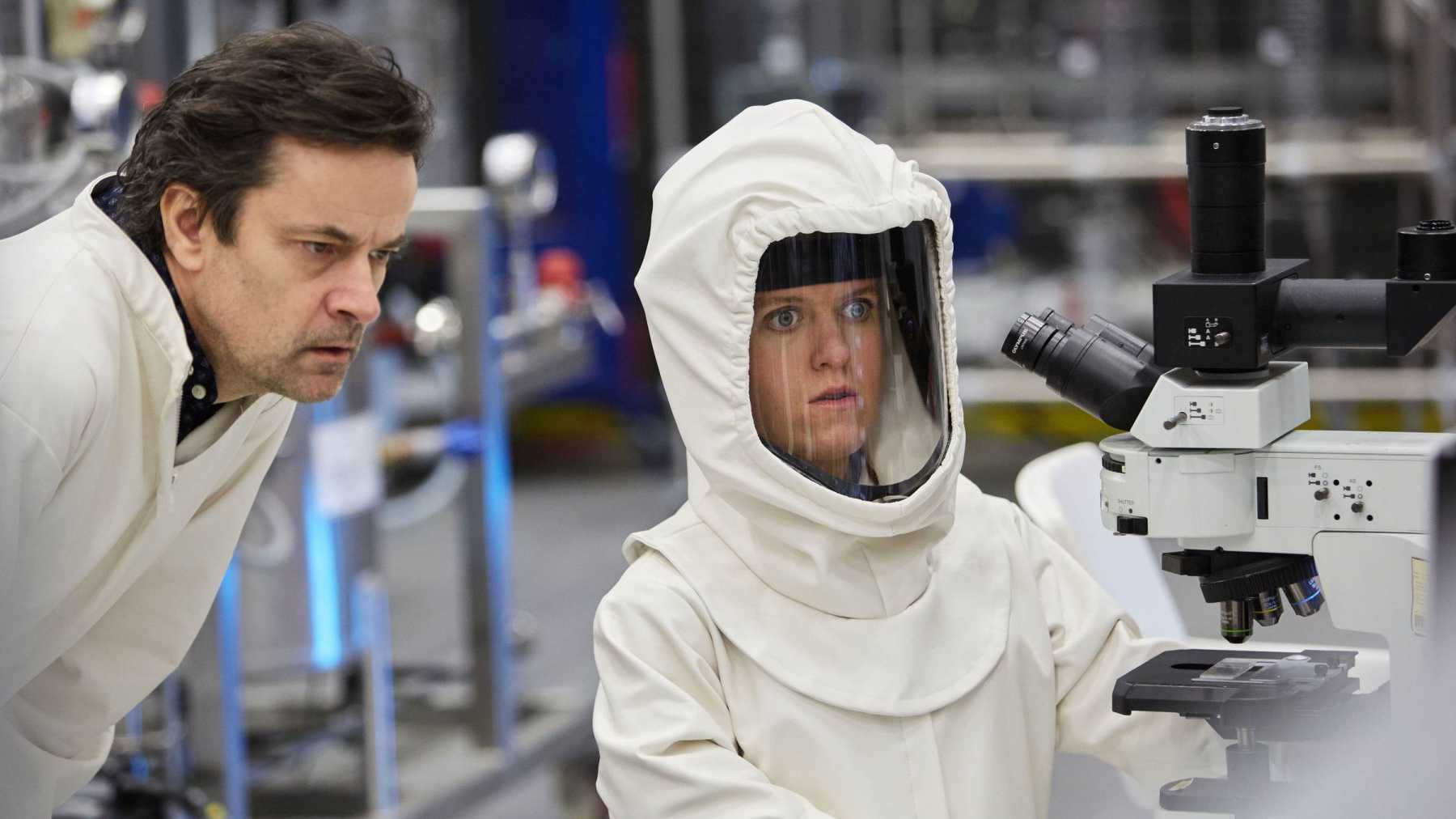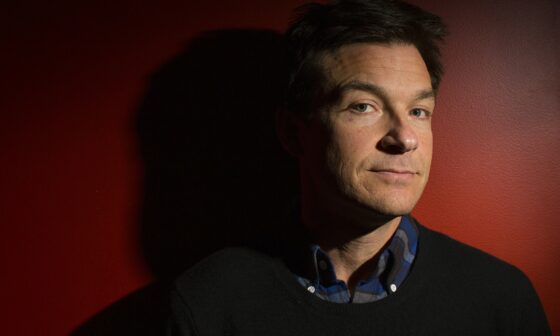
‘Love is slavery’ – that is the depressing analysis The Doctor comes up with in the second episode of a three-part arc where the Timelord battles The Monks who are trying to conquer Earth.
After The Doctor escapes from their virtual reality simulation created by The Monks, UNIT asks for his help after a pyramid appears in the middle of a disputed zone between the American, Chinese and Russian armies.
When The Doctor goes into the pyramid he finds The Monks who say Earth is on the edge of disaster and they can save the planet if people in authority consent. It is up to The Doctor with the military commanders to figure what this disaster is and how to prevent it without asking for The Monks’ help.
‘The Pyramid at the End of the World‘ picks on a few plot ideas that were established in previous episodes: the political and military crisis in Turmezistan was a plot point in ‘The Zygon Invasion’ and The Doctor returns to his role as president of Earth during emergencies was first referenced in ‘Death in Heaven’ – this was now used for a joke about Donald Trump. After so many standalone episodes it’s weirdly refreshing for the series to go back to previous storylines.

The pyramid appearing out of nowhere is a similar set up to a classic era episode where a strange and public event happens on Earth and it is up to The Doctor and UNIT to stop whatever alien threat it is that week. Around the world all clocks have been set to the doomsday clock’s time. Steven Moffat, who co-wrote the episode loves to reference the classic era and he did capture the tone of those episodes for ‘The Pyramid at the End of the World’.
Peter Harness was the other writer of the episode and he has the dubious honour of having written one of the worst modern Doctor Who episodes – ‘Kill the Moon‘. He also wrote the two-parter ‘The Zygon Invasion/The Zygon Inversion’ which were better episodes and had one of the Twelve Doctor’s best speeches.
‘The Pyramid at the End of the World’ does have a similar theme about humanity uniting because of some threat to the planet and The Doctor and his companions act like they know best. At least in ‘The Pyramid at the End of the World’, The Doctor makes the military commanders aware that The Monks have an ulterior motive and the idea of the Americans, Chinese and Russians working together, because of an alien threat, makes some sense.

As well as the action in Turmezistan the episode has a subplot in a laboratory in England where two scientists are working for a biotech firm – one of them (Tony Gardner) coming into work hungover. Their crisis is the one that could lead to the Earth’s destruction. When The Doctor finally arrives he acts like a game show host -like he did in ‘The Zygon Inversion’ as he questions Erica the scientist (Rachel Denning) about the virus and how to destroy it.
Early scenes with the scientists were intercut with footage of a glass bottle falling to the floor. This was similar to the beginning of ‘The Pilot‘ where it showed a slowed down version of Bill meeting Heather.
Combined with the teaser for the next episode leads me to believe that Doctor Who might go down an alternative timeline/reality reveal near the end of the season. The Monks also show The Doctor, Bill and others visions of Earth’s disaster in the future which personally reminded me of the 2015 film Tomorrowland.
‘The Pyramid at the End of the World’ is a talky episode – most of the action takes place in the military command centre, the pyramid and the lab as The Doctor, the commanders, Bill and Nardole (Matt Lucas) theorise what The Monks want and why they need humanity to consent to their subjugation. It makes for a different kind of threat from aliens that invade Earth or are already in control of governments.

The Doctor’s blindness continues to be an issue for the Timelord and Nardole having to act his eyes. Even though he can’t see The Doctor’s mind is sharp as ever as he figures outs what The Monks want and how to stop them. However, he is shown to be more desperate when he agrees with the military commanders plan to attack the pyramid – an action he would not normally agree to. It also takes Bill a bit too long to realise The Doctor has lost his sight.
After quite a few special effects heavy episodes ‘The Pyramid at the End of the World’ is a more constrained episode and required the force of personality of its cast which they were able to provide. Whilst the episode has some interesting ideas Doctor Who has been more compelling in the past. The teaser for the follow-up episode “The Lie of the Land” looks like the more interesting story.
#Peace.Love.DoctorWho








